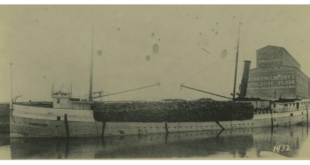Bordered by the two largest Great Lakes, the Upper Peninsula i s no stranger to wide variations in weather conditions. From dramatic temperature drops in the summer time to lake effect snow in winter, meteorologist Matthew Zika says the disparities play out in significant ways year-round. He says that there is even a learning curve for new staff at the agency’s Marquette office. Zika uses the term microclimates to describe the phenomenon, and he says getting real-time data from on the ground helps forecasts dramatically. There are several programs for the average person to help contribute to.
Zika says that lake effect snow requires a surprisingly narrow set of conditions to occur.
Zika says as waters cool it becomes harder to get the variance between lake and air temperatures. That is why the lake effect snow machine tends to turn off as winter progresses. It is not related to ice coverage.
Luckily, snow bands that form across the UP tend to be broad in nature. Higher elevations will get more snow than lower, but they don’t operate often like a fire hose. Zika says it is far more common for Lakes Erie and Ontario to dump two days worth of snow in a matter of hours in a highly localized manner. Only the Keweenaw Peninsula is susceptible to that potential, when westerly winds are prevalent.
Zika says the middle part of the month should be quiet, but the end of January and beginning of February are set to be dominated by cold snaps and northwesterly winds, creating a chance of heavy snowfall in the period.
 Keweenaw Report Your Source for Local News and Sports
Keweenaw Report Your Source for Local News and Sports





